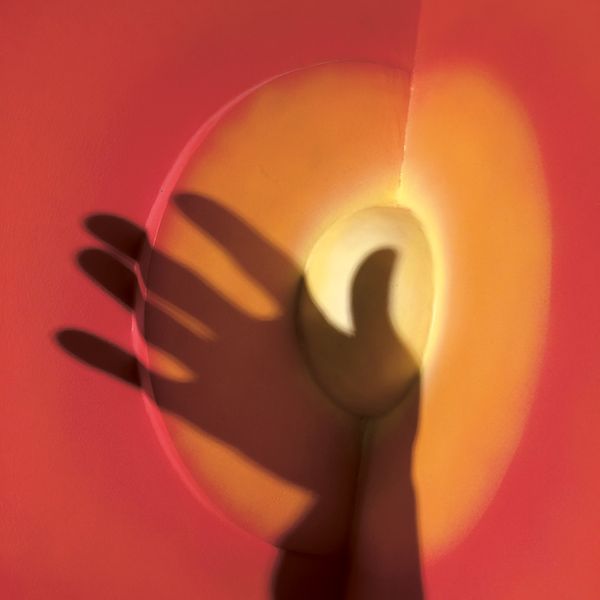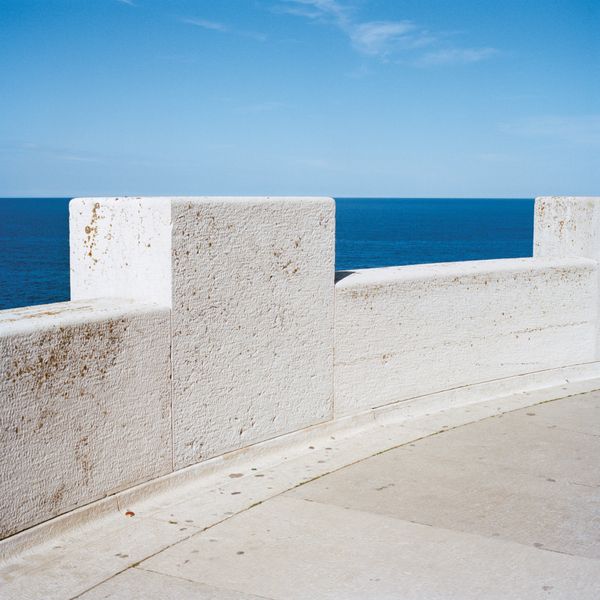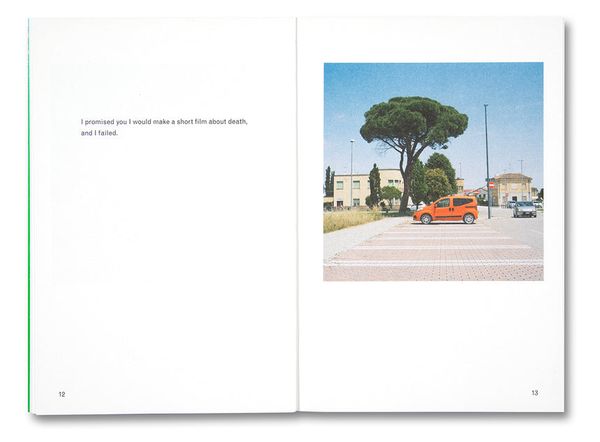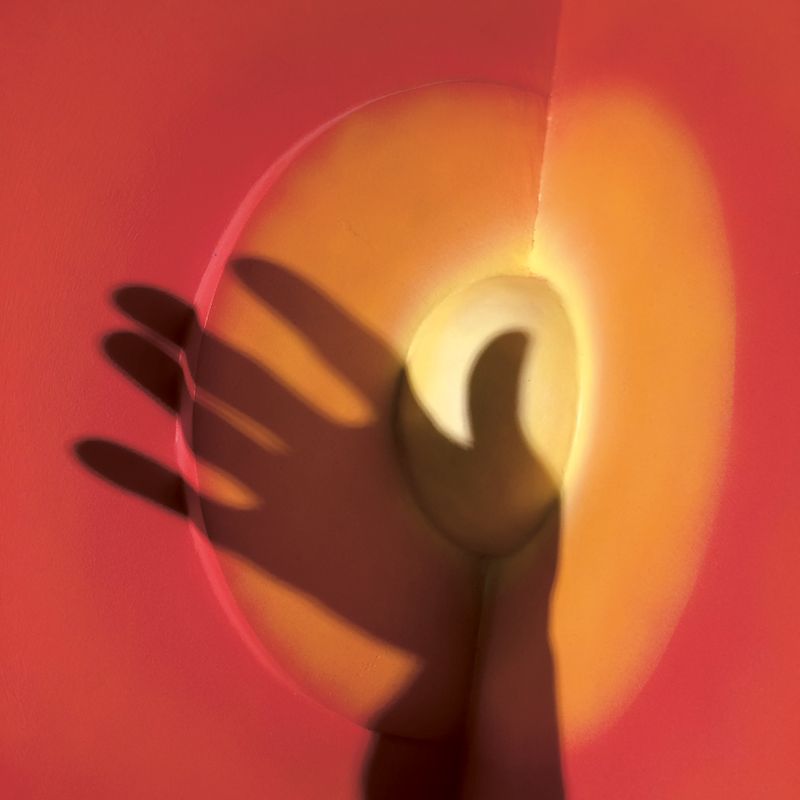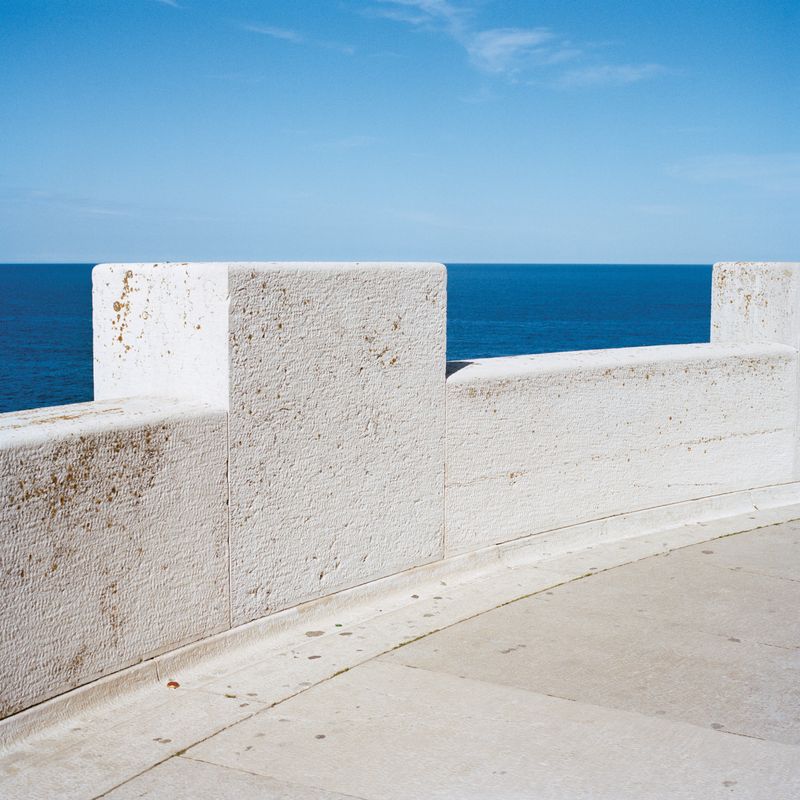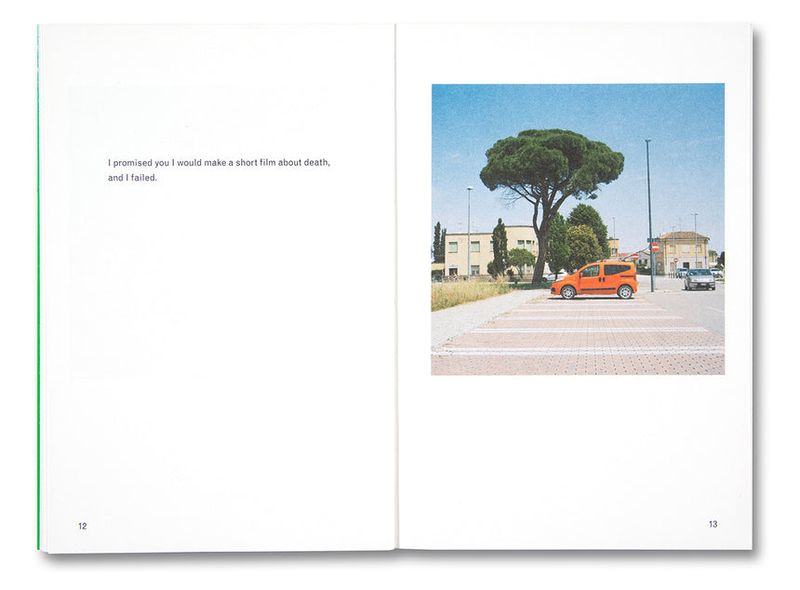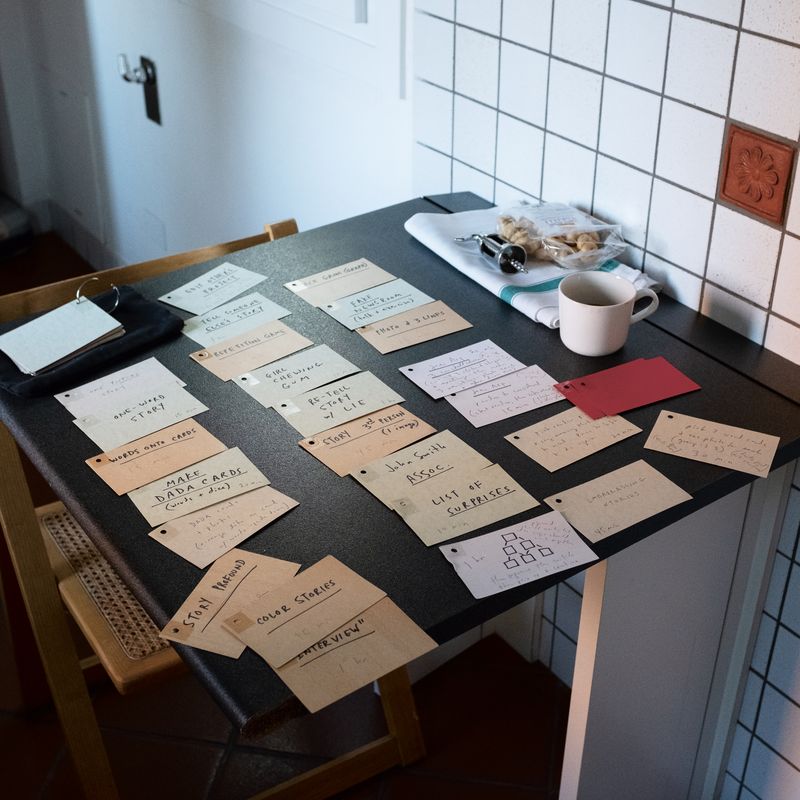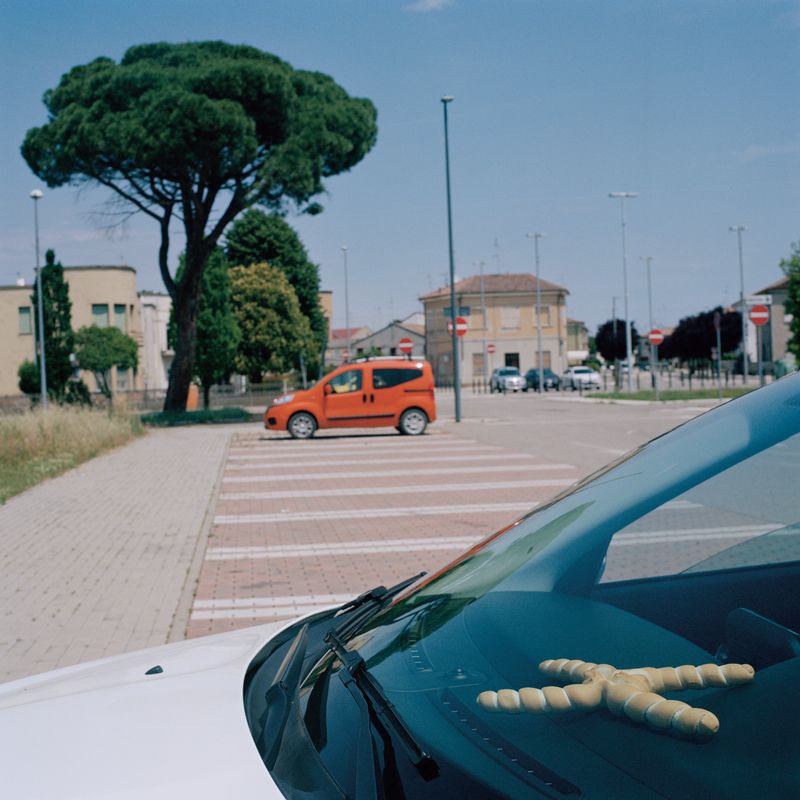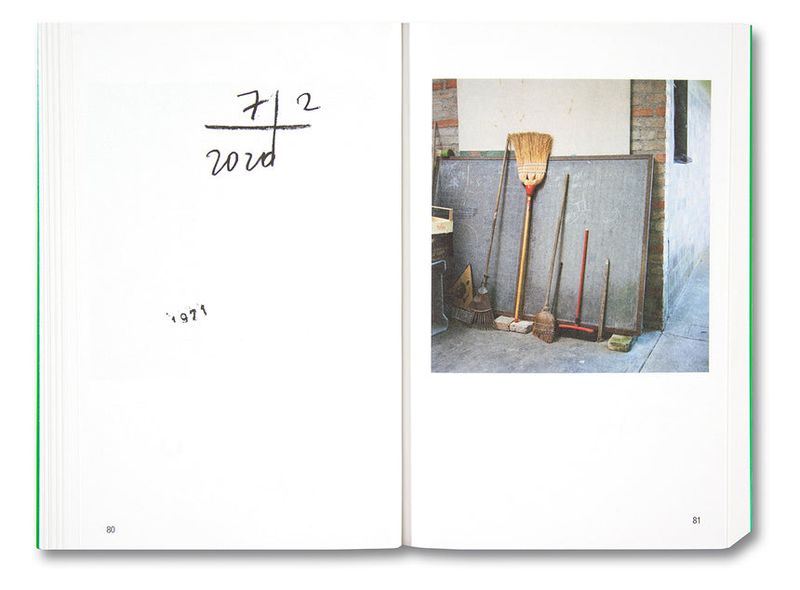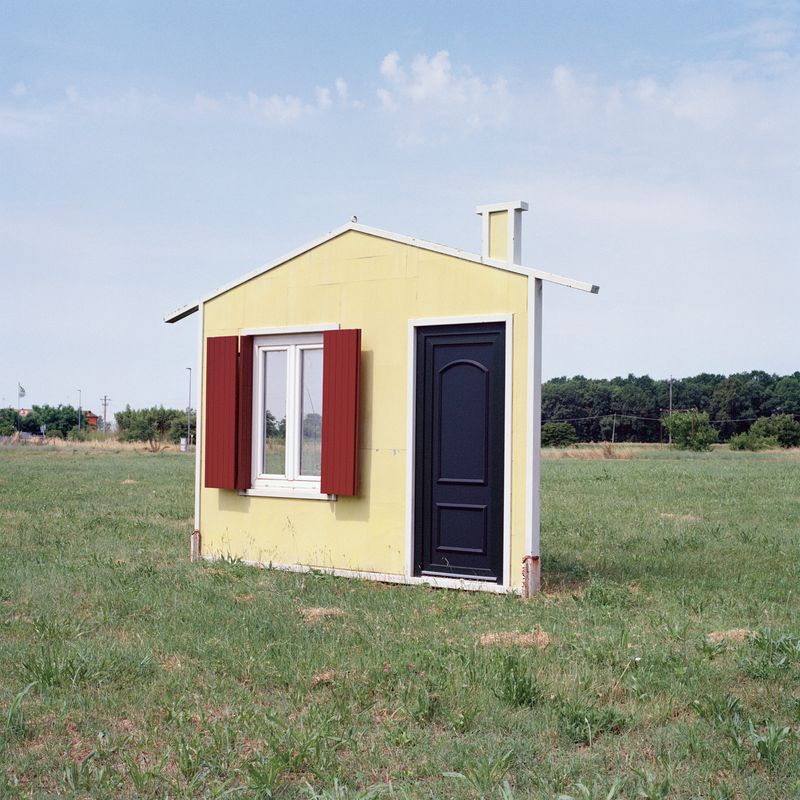Photobook Review: The Heart Is A Sandwich By Jason Fulford
-
Published16 May 2023
-
Author
A sculpture made from bread, Aldo Rossi's autobiography, and an old persimmon farm are some of the encounters Jason Fulford's new book is about. First started as a dream on an airplane, the book is a collection of short stories and a tribute to Italy.
Can pictures function as words do?
The Heart Is a Sandwich, Jason Fulford’s newly launched book, is a collection of short stories disguised as a traditional one by design: it is presented a paperback, novel-size. The book’s structural elements (title page, colophon, dedication, page number, and so on) are located where you’d expect them to be. It’s almost as if they were saying: this is precisely what you think it is.
Except, it’s not. Everything is played on this thin line: a balance between meeting expectations, and deceiving them. Giving you comfort, to then make you lose the ground under your feet. The contract between the book and its reader is slippery, and keeps the latter on edge.
What am I looking at - or what am I reading?
For the first time in his bookmaking career, Fulford’s photographs are bound together by geographical criteria: the book is a series of encounters, all located in Italy during a span of time of ten years. “This didn’t work out right away”, Fulford tells me. “I was about to stop, to scatter the photos in other projects. But then, on an airplane I had a dream: it had to be a book of short stories. Then, everything fell into place like a puzzle. The form is what allows for it to work this way. Each story has a different sensibility, and they all speak to one another”.
Every story works, indeed, in a different way. “Hopefully, they all represent a specific feeling”, says Fulford when I ask him to guide me through the book’s logic. “Coriandoli is purely aesthetic. Metamorfosi is literally a documentary of an experience that I had. The Heart is a Sandwich is personal, and a little abstract. I really like them for multiple, changing reasons. It’s kind of like in life, you wake up each day with a different balance of emotions, and logic. I hope that the book represents these ways of being - in a way, the various selves that you have within you”.
Throughout the book, the negotiation between text and image is continuously reshaped: the things they do to one another keep evolving, never still. In “The Heart is a Sandwich”, for example, words and pictures come together organically: they almost walk you through the shaping of a thought. In some stories, the relationship between the two feels straightforward, while in others it can get quite cryptical, making you question what you’ve just seen. In the first story of the book, “Borgia’s Braids”, words push you to go back, and watch everything again from scratch: everything will look just the same, but radically different.
The silence of images can be hard to break. Gaps between one picture and the other can grow wide. In The Heart Is a Sandwich, these voids are there to be played with. At times, the sequence seems to be willingly deepening them, letting ambiguities fill the page. Just as often, the image’s ability to speak is stretched. It feels like each photograph could lean towards the page after it, as it still deals with the meaning it absorbed from the one preceding it. Even if you'll find stand-alone photographs, there is no such thing as an isolated image. “I think of editing as if I am collecting vocabulary, that then later I can use to “write” something. I’m kind of building my own dictionary”, explains Fulford. The whole process is guided by intuition: “I think the best advice I have ever received from a teacher was by Anne Turyn at Pratt Institute in Brooklyn. She said: ‘Keep making pictures' - period. ‘All of the questions and answers will be in the work’. So, in other words: you go out in the world, and your intuition is informed by everything that you read, by the conversations that you have… When you’re making the pictures, it’s this intuition that is guiding. Then, when editing, you eventually understand what these pictures are about. It’s a good process for me because ideas are generated organically: I’m never projecting concepts onto my material, or trying to follow a recipe”.
As with all short stories, they sometimes end too quickly. You turn a page, and it’s suddenly over - you just can’t seem to anticipate it. A collection of short stories is, though, more than the sum of them. Each story picks up things that others left behind. Just as sequencing images is a process for thinking, the twelve stories flow altogether in a way that exceeds any logical reading, or attempt at decoding. “There’s a writer that I love, Flannery O’ Connor”, Fulford tells me. “I remember a quote from her: I don’t know what I think until I read what I’ve written.”
--------------
The Heart Is A Sandwich is published by Mack BooksEmbossed paperback with flaps13.6 x 20cm, 320 pages
ISBN 978-1-913620-96-7April 2023€40 £35 $45
--------------
All photos © Jason Fulford
--------------
Jason Fulford (b.1973) is an American photographer based in Brooklyn, New York City. His primary creative language is a photo book. In the process of editing, he transforms bits of everyday into words of photographic sentences. He constructs new realities out of “found” material. Some of his most famous photobooks include: Raising Frogs For $$$ (2006), The Mushroom Collector (2010), Hotel Oracle (2013), Contains: 3 Books (2016), The Medium is a Mess (2018). He is also a co-founder of non-profit publisher J&L Books, where with Leanne Shapton, they publish photobooks of other photographers. Occasionally, as an educator, he holds workshops about editing and photobooks for photography students around the world.
Camilla Marrese (b.1998) is a photographer and designer based between Italy and The Netherlands, about to graduate from Design Academy Eindhoven's MA in Information Design (NL). Her work, often realized in a duo with Gabriele Chiapparini, was exhibited in several festivals and galleries including Fotografia Europea, Kranj Photo Fest, and PhMuseum Lab.
